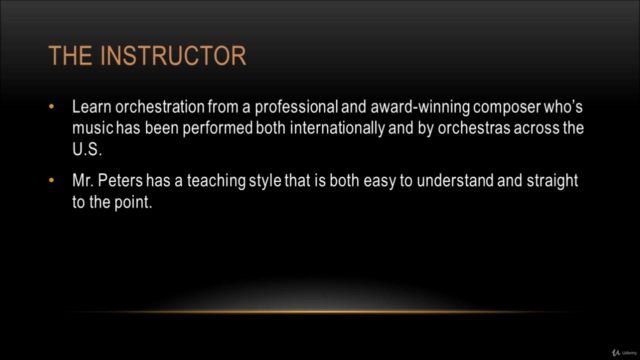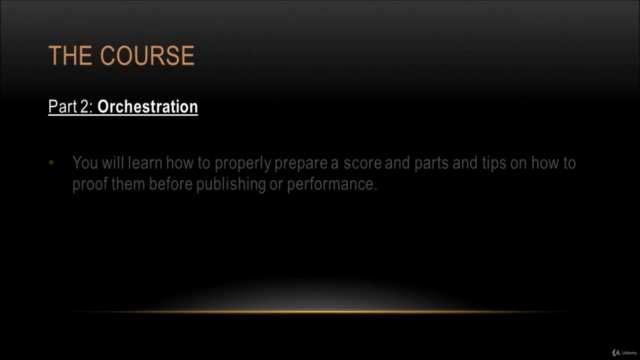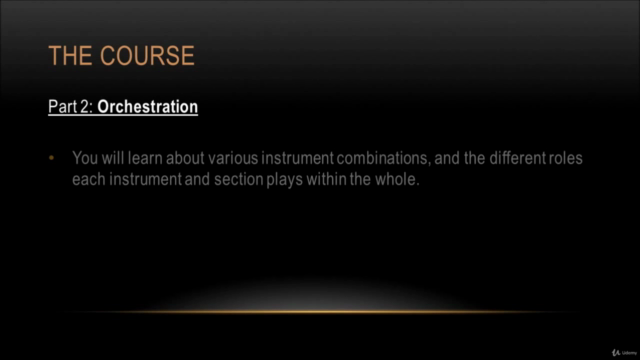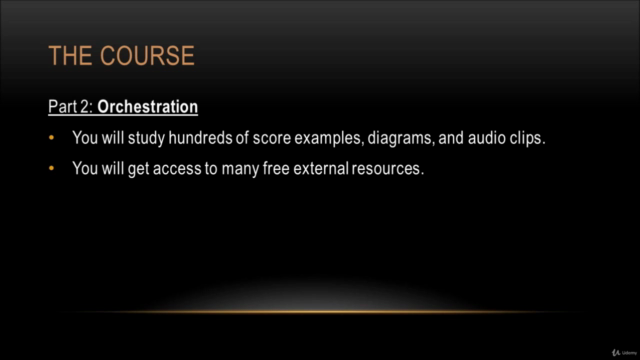Orchestration

Why take this course?
🎻 Discover the Secrets of Orchestration with "The Complete Course in Instrumentation & Orchestration" 🎵
Overview:
Master the art of orchestration with our comprehensive online course, specially designed for composers and musicians eager to delve into the world of symphonic writing. This course is split into two insightful parts: Instrumentation and Orchestration.
Part 1: Instrumentation (The Building Blocks of Sound)
- Understanding Instruments: Learn the construction, sound production, and proper notation of every orchestra instrument.
- Ranges & Registers: Explore the playing and sounding ranges of each instrument to craft harmonious melodies and textures.
- Dynamics & Techniques: Discover the dynamic capabilities and common playing techniques that will enrich your compositions.
Part 2: Orchestration (Bringing Your Vision to Life)
- Orchestral Textures & Timbres: Gain insights into creating diverse timbres and textures within an orchestra.
- Scoring Chords: Learn the best practices for scoring harmonically rich chords.
- Instrument Roles: Understand the roles each instrument and section plays to ensure a balanced and effective ensemble.
- Score & Part Preparation: Master how to prepare a score and parts, ensuring every musician can play their part perfectly.
- Proofing Your Work: Ensure your music is error-free before publishing with our helpful tips and techniques.
Hands-On Learning Experience
- Score Reading & Analysis: Engage with score excerpts provided in the course, but be prepared to study a variety of scores independently.
- Listening Assignments: Enhance your learning through guided listening sessions that bring orchestration principles to life.
- Composing Tasks: Apply what you learn with practical composing assignments that challenge and inspire.
- Quizzes & Interactive Learning: Reinforce your knowledge with quizzes designed to test your understanding of key concepts.
Course Features
- Reference Charts: Utilize the appendix's resource charts for quick reference.
- Lifelong Learning: This course is a stepping stone; true mastery in orchestration requires continuous study and personal experience.
Prerequisites:
This course assumes you have a solid foundation in music theory, including music notation, and basic composition skills. For those looking to build upon these fundamentals, consider taking the following courses by instructor Jonathan Peters:
- 🎼 Music Theory
- ✍️ Music Composition 1
- 🎶 Music Composition 2
- 🎵 Four-part Harmony
Embark on a journey through the intricate and rewarding realm of orchestration. With "The Complete Course in Instrumentation & Orchestration," you'll gain the knowledge and skills to breathe life into your musical ideas, create rich textures, and ultimately become proficient in the art of composing for orchestra. Enroll now and transform your approach to music composition! 🎹✨
Course Gallery




Loading charts...
Comidoc Review
Our Verdict
Orchestration: The Complete Course in Instrumentation & Orchestration stands out for its thorough treatment of orchestral instruments, notation, and techniques, serving as an excellent reference source. However, the course's dryness might affect overall enthusiasm and engagement levels, making it essential to maintain self-motivation throughout the learning process.
What We Liked
- Covers a comprehensive range of orchestration concepts with clear explanations and numerous visual examples.
- Includes many recommendations for scores to study, providing valuable references for deeper learning.
- Well-organized course structure with relevant quizzes that help reinforce the knowledge provided.
- Highly detailed material that acts as a solid foundation for orchestration and composition.
- Access to free external resources for further exploration
Potential Drawbacks
- Presentation can be dry and monotonous, potentially affecting learner engagement.
- Lack of enthusiasm from the instructor may impact overall motivation.
- Use of long readings instead of spoken word can make learning less accessible for some.
- Links to audio examples sometimes require independent sourcing and listening.
- Minor translation errors in subtitles may cause confusion for non-native English speakers.